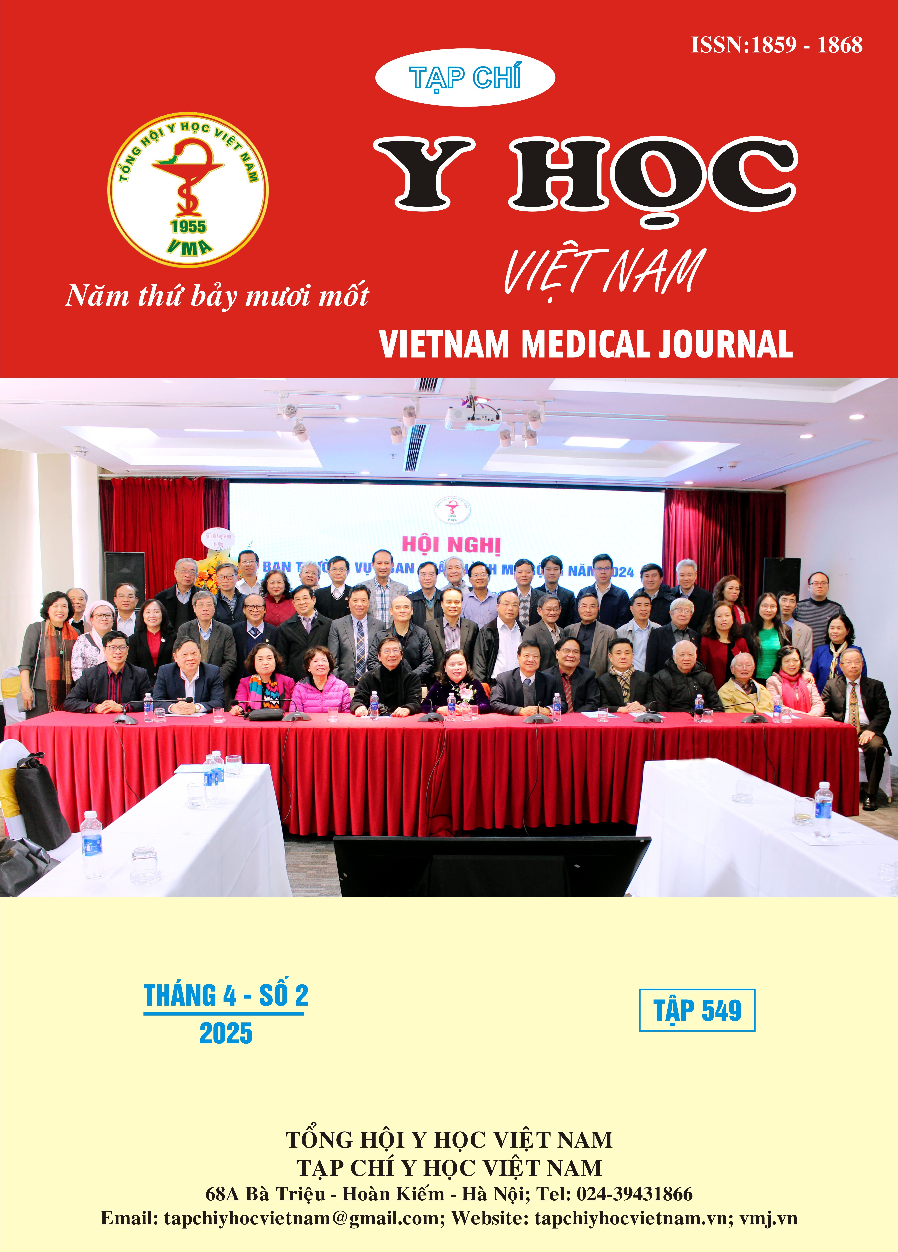MAGNETIC RESONANCE IMAGING FEATURES OF ACUTE OSTEOMYELITIS IN PEDIATRIC
Main Article Content
Abstract
Objective: Description of magnetic resonance imaging features of acute osteomyelitis in children. Subjects and methods: 123 pediatric patients with clinically suspected acute osteomyelitis, underwent magnetic resonance imaging and had results confirmed by surgery or biopsy at the National Children's Hospital. Results: There were 92 pediatric patients with confirmed osteomyelitis based on surgery or biopsy. In the cases of osteomyelitis on MRI, 88% of cases had low signal intensity on T1W; 77.2% of cases had high signal intensity on T2W; 91.3% of cases had high signal intensity on STIR; 94.6% of cases had contrast enhancement after injection. The most common secondary symptom on MRI was intra-bone abscess, accounting for 90.2% of cases. MRI helps to evaluate local complications well: soft tissue abscess and adjacent arthritis. Conclusions: On MRI, osteomyelitis has low signal intensity on T1W, high signal intensity on T2W and STIR, and peripheral enhancement after injection. Intraosseous abscess is the most common secondary sign.
Article Details
Keywords
MRI, osteomyeltis, Paediatrics
References
2. Lee, Y. J., Sadigh, S., Mankad, K., Kapse, N. & Rajeswaran, G. The imaging of osteomyelitis. Quantitative imaging in medicine and surgery 6, 184-198 (2016) doi:10.21037/qims.2016.04.01.
3. Jha, Y. & Chaudhary, K. Diagnosis and Treatment Modalities for Osteomyelitis. Cureus 14, e30713 (2022) doi:10.7759/cureus.30713.
4. Schallert, E. K. et al. Metaphyseal osteomyelitis in children: how often does MRI-documented joint effusion or epiphyseal extension of edema indicate coexisting septic arthritis? Pediatric radiology 45, 1174-1181 (2015) doi:10.1007/ s00247-015-3293-0.
5. Popescu, B, Tevanov, I, Carp, M & Ulici, A. Acute hematogenous osteomyelitis in pediatric patients: epidemiology and risk factors of a poor outcome. The Journal of international medical research 48, 300060520910889 (2020) doi:10.1177/0300060520910889.
6. Manz, N., Krieg, A. H., Heininger, U. & Ritz, N. Evaluation of the current use of imaging modalities and pathogen detection in children with acute osteomyelitis and septic arthritis. European journal of pediatrics 177, 1071-1080 (2018) doi:10.1007/s00431-018-3157-3.
7. Dartnell, J, Ramachandran, M & Katchburian, M. Haematogenous acute and subacute paediatric osteomyelitis: a systematic review of the literature. British Editorial Society of bone and joint surgery 94, 586 - 589 (2012) doi:10.1302/0301-620X.94B5.28523.
8. Peltola, H, Pääkkönen, M, Kallio, P & Kallio, M. J. Short- versus long-term antimicrobial treatment for acute hematogenous osteomyelitis of childhood: prospective, randomized trial on 131 culture-positive cases. The Pediatric infectious disease journal 29, 1123-1128 (2010) doi:10.1097/INF.0b013e3181f55a89.
9. Dobaria DG & HL, Cohen. Osteomyelitis Imaging. Osteomyelitis Imaging, (2023)


